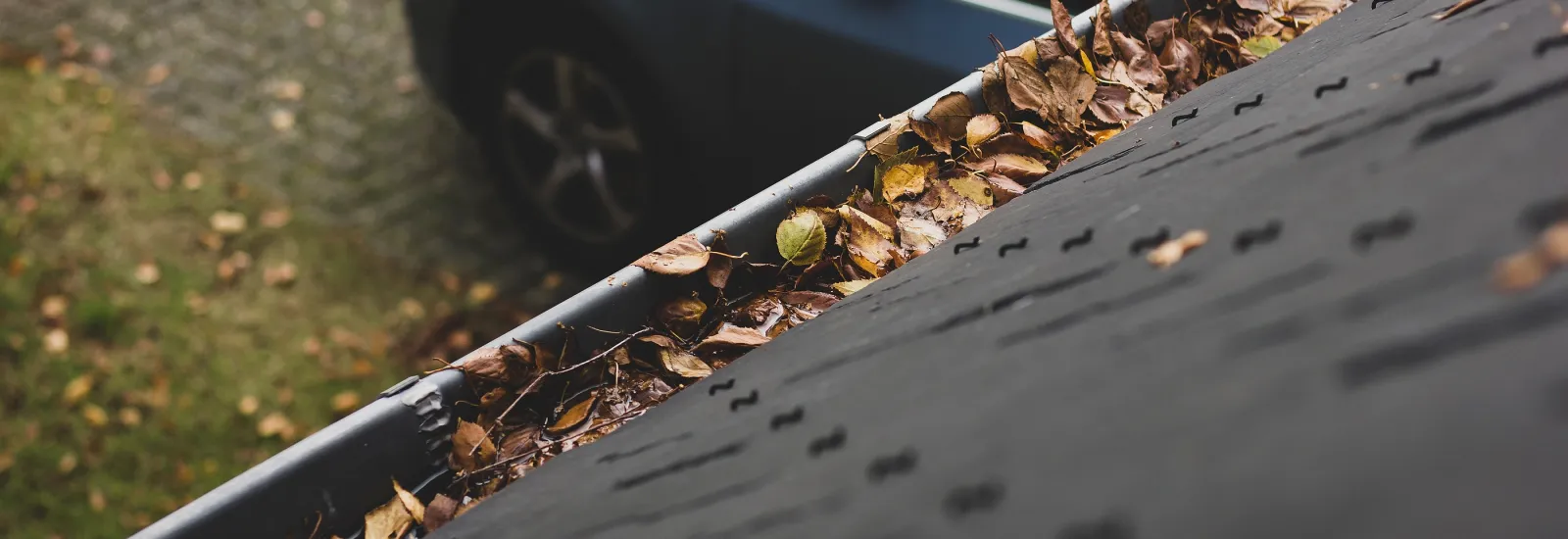When your roof is working properly, it's easy to take that protective layer for granted. But even when you're free of leaks, heat loss, and other roofing issues, it's important to stay on top of roof maintenance and make sure those problems are delayed and prevented as much as possible.
If you've never thought about how to maintain a roof, rather than waiting to care for this structure until issues arise, you may not be aware of how you can prolong your roof with care and consistent evaluation for early signs of structural problems to address. Fall is a crucial season to preserve the integrity and health of your roof through simple seasonal maintenance. Read on to learn how a little domestic roof maintenance this fall can yield benefits to your roof for years to come.
What is Roof Maintenance?
Roof maintenance involves any sort of work performed on the roof that supports the health, integrity, and endurance of the roof— specifically when that work is focused on delaying or altogether avoiding certain types of damages requiring repair or replacement.
Even if you don't consider yourself handy, many of the most valuable forms of roof maintenance can be performed by the average homeowner, as long as you're able to safely climb up to your roof on a ladder. In other cases— or if you don't feel safe going up on your home's roof— this simple roof maintenance can be performed by an experienced roofing expert.
How to Maintain Roof Shingles
Prevention is always cheaper than repair. If you want to use regular roof maintenance to keep repairs and replacement at bay, here are some simple ways to maintain those shingles:
- Clean leaves and other debris off of your roof. As leaves and other debris decompose, they can accelerate the degradation of your roof. Regular cleanings will minimize the impact of this organic material, including water, on your home's shingles.
- Clean gutters to avoid water buildup. Blocked gutters can lead to standing water on your roof, which increases the risk of leaks and accelerates the deterioration of your shingles.
- Trim branches at risk of falling on your roof. While not every branch is necessarily a serious risk to your home, it's wise to cut down branches that are dead, low-hanging or deemed a risk by an arborist. Roofing experts strongly recommend hiring a certified arborist for this work, rather than risking your own safety—and the safety of your roof—by taking care of this work on your own.
- Inspect shingles for signs of wind damage. High winds from a hurricane or other storm can bend shingles and compromise their ability to protect your home from the elements. Conduct these inspections regularly, but especially after high winds strike your home in a storm.
- Check to flash for signs of wear and tear. Flashing around chimneys and other features can pull away from the surfaces they're meant to seal against water and other leaks. Inspections of flashing should be conducted any time you're on the roof to inspect shingles.
Essential Roof Repair Checklist for Homeowners
Even perfect roof maintenance can't save you from roof repairs, or a possible replacement. If you suspect you need repairs on your roof, here are some important steps to take as you approach this process:
- Determine the scope of necessary repairs. First and foremost, figure out what kind of repairs your house needs. In some cases, such as loose flashing, this may be easy to assess on your own. In other cases, a roofing expert may be needed to identify damage that needs repairing.
- Get a quote from a trusted roofing expert. No matter what kind of repairs your roof needs, a quote from a local roofing company will help you plan out how you expect to pay for those repairs.
- Consider the long-term impact of your roof repair decisions. One of the most important roof replacement tips is to never settle for a repair when a replacement is needed. While repairs bring lower short-term costs, they only delay the inevitable replacement your roof will eventually need—and if repairs are insufficient to restore the integrity of your roof, they could ultimately lead to worse damage, and more costly repairs when you do replace your roof.
- Look for damage in your attic and ceiling. When your roof has suffered damage, don't limit the scope of your repairs to the damage visible on the surface of the roof. Compromised roofs can cause water to enter your home, causing damage to interior surfaces and increasing the risk of mold. Always inspect the interior of a roof's structure to make sure all damage is properly repaired.
- When in doubt, request a free evaluation. Unsure whether you need roof repairs? Don't take the risk of ignoring important repairs that lead to more damage and costs. A local roof repair expert can offer a no-obligation evaluation to determine what repairs, if any, are needed.
Eager to avoid costly roof repairs? Now is the time to clean up your roof and clear away fall's debris before winter arrives. Contact a local roofing company for help getting your roof in perfect condition prior to the cold months ahead.
